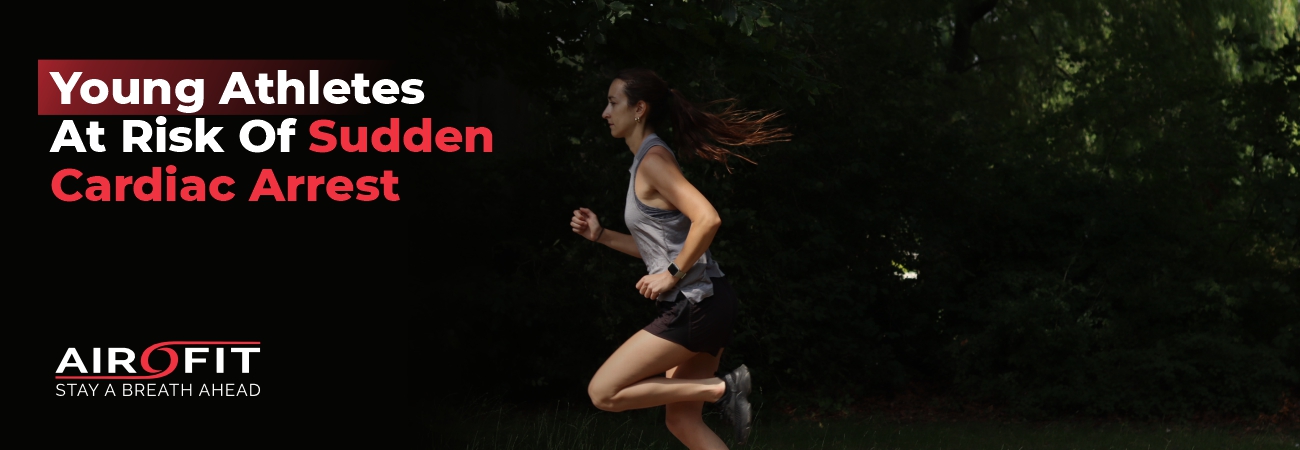
Young Athletes At Risk Of Sudden Cardiac Arrest.
Athletes have traditionally been known to exhibit an exorbitant level of physical fitness and excellent cardiac health. Contrary to the general belief that they are relatively well protected from cardiac pathology, a diverse array of cardiac conditions have come to the notice of media attention because of the sudden, unexpected deaths of celebrated athletes.
SCD (Sudden Cardiac Death) is defined as unexpected death due to a cardiac etiology occurring within 1 hour of symptom onset, most commonly from a lethal ventricular arrhythmia (abnormal heartbeats that generate in ventricles or lower chambers of the heart) in individuals without known potentially fatal condition. The highest incidence of SCD in young athletes is among those participating in sports like basketball, football, track, and other endurance sports.
Athletes have a higher risk of sudden cardiac arrest
The majority of young athletes can engage in sports with no heart problems. But because sudden cardiac arrest is a severe and deadly condition, it’s essential to be aware of your own risk of SCA (Sudden Cardiac Arrest). For example, about 6 in every 100,000 college African-American male athletes yearly have a sudden cardiac arrest. In athletes under age 35, the most common cause of SCA is a genetic heart disease, such as:
- A heart muscle disorder, such as hypertrophic or arrhythmogenic right ventricular cardiomyopathy.
- A heart rhythm disorder, such as Wolff-Parkinson-White syndrome or Long QT syndrome (catecholaminergic polymorphic ventricular tachycardia).
You may also have an increased risk of SCA if you:
- Were born with an abnormal heart artery
- Have a heart infection
- Have Marfan syndrome (a disorder that impacts the proteins that make healthy connective tissue, such as those that support your heart)
- Coronary artery disease is the leading cause of SCA among people over 35.
The warning signs of sudden cardiac arrest
Symptoms of sudden cardiac arrest include
- Unconsciousness
- Irregular or no breathing
- Chest pain
- Discomfort in one or both arms or in the back, neck, or jaw
- Unexplained shortness of breath
- Palpitations
- Seizures
With each passing minute after a sudden cardiac arrest, a person’s survival chances diminish by 10 percent. Unless revived immediately by CPR or a defibrillator, the person will go into a coma, leading to eventual death. Fortunately, star basketball player Mike Papale survived because of the quick reaction of an EMT, who immediately initiated CPR and the chain of survival.
Are Sudden Cardiac Arrest and Sudden Cardiac Death the same thing?
Sudden cardiac death (SCD) is death due to a cardiovascular cause within one hour of the onset of symptoms.
A sudden cardiac arrest (SCA) occurs when the heart stops beating or is not beating sufficiently to maintain perfusion and life.
Airofit is a device that helps prevent Sudden Cardiac Arrest.
Respiratory muscle strength (RMS) is associated with good functionality of the respiratory system. For the general population, it refers to the quality of life; for the athletes, it is related to more remarkable performance.
- The AiroFit PRO is a small, portable, lightweight, noninvasive, mouth-pressure manometer with a rubber-flanged mouthpiece for assessing and training the respiratory muscles.
- AiroFit PRO E-unit contains pressure sensors and a Bluetooth transmitter. This allows you to measure and visualize breathing patterns on the phone via the AiroFit PRO Sport mobile app. Moreover, the AiroFit PRO breathing trainer provides adjustable airflow resistance, making your respiratory muscles work overtime.
- We can select the most appropriate resistance level depending on the training program, duration, and intensity. The AiroFit PRO generates resistance on respiratory muscles – primarily the diaphragm and the intercostal muscles, resulting in fatigue, which is then overcompensated by muscle tissue growth, making your breathing muscles faster, stronger, and more efficient.
The AiroFit PRO device, in addition to recording the strength of the respiratory muscles, has an application for the training of the respiratory muscles to improve respiratory function. According to its instructions, it has settings with resistors that can benefit the respiratory education of the general population, athletes, and patients with chronic respiratory diseases. Specifically, the patient is allowed to collect measurement data through the application, thus providing an overview of the total days of use of the device while allowing immediate assessment of the level at which the patient-athlete is shown percentages of his measurements on the ideal and expected values based on the anthropometric characteristics of the patient. At the same time, with the AiroFit PRO device, there is the possibility for simultaneous inhalation and exhalation exercises without making any adjustments to the device.

